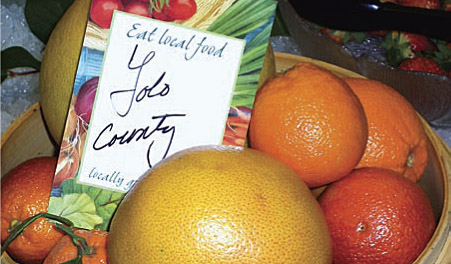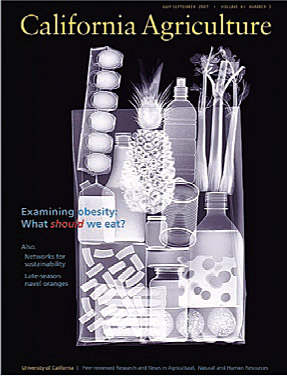All Issues
Science briefs
Publication Information
California Agriculture 62(3):86-86.
Published July 01, 2008
PDF | Citation | Permissions
Full text
Glyphosate resistance is increasing in California
Because of its broad-spectrum, economical weed-control ability, glyphosate (the active ingredient in Roundup, Touchdown, Buccaneer, Durango and other product names) has become a popular weed management tool for agricultural crops and in nonagricultural settings such as parks, schoolyards, and public and natural areas. However, in recent years at least 14 glyphosate-resistant weed species have been reported, threatening the loss of this effective herbicide. As a result, the Weed Science Society of America (WSSA) issued the following warning May 19:
“[Glyphosate's] widespread, repeated and often sole use for weed management has selected weeds that have become glyphosate-resistant and are thus not controlled by this herbicide. WSSA … cautions against following a single approach to weed management, which can result in resistant weeds.”
More information:
“Herbicide resistance: definition and management strategies” (ANR Pub 8012)
http://anrcatalog.ucdavis.edu/pdf/8012.pdf
Weed Science Society of America
Anil Shrestha, IPM weed ecologist at the UC Kearney Agricultural Center, says that although crops genetically engineered to resist glyphosate (called “Roundup Ready”) have been the primary resistance concern in the United States and some other countries, as of now no confirmed cases of glyphosate-resistant weeds have been reported in Roundup Ready crops grown in California (primarily cotton and corn).
However, glyphosate-resistant weeds have been reported in California orchards, vineyards and noncrop areas, Shrestha says. These include rigid ryegrass (Lolium rigidum), horseweed (Conyza canadensis) and hairy fleabane (Conyza bonariensis) (see page 116).
Furthermore, poor control of several other weed species with glyphosate is occasionally reported to UC personnel, Shrestha says. “Because of its ease in use, environmental safety and effective control of weeds, it is important to maintain the viability of glyphosate in California.” Experts recommend using a variety of weed control tactics, including combining glyphosate with other postemergent herbicides.
Study finds more fresh, local foods on hospital trays
UC researchers recently studied farm-to-hospital initiatives in the Bay Area and found a growing movement to put locally produced food on patient trays and cafeteria menus. They say that buying from local farmers and ranchers is part of a trend toward better quality and flavor in hospital meals, both to satisfy consumer demand and address concerns about dietary contributions to chronic disease.
“Just replacing food-service cans with locally grown vegetables won't curb high rates of obesity and heart disease, but it may encourage patients and café customers to increase their daily intake of vegetables,” says study co-author Gail Feenstra. “And if there's one piece of firm advice from nutritionists, it's to eat more fruits and vegetables.”
The report, “Emerging Local Food Purchasing Initiatives in Northern California Hospitals,” is available online at http://sarep.ucdavis.edu/cdpp/fti .
Feenstra is food systems analyst for the UC Davis Agricultural Sustainability Institute (ASI) and the statewide Sustainable Agriculture Research and Education Program (SAREP). Her coauthor is graduate student Elizabeth Sachs.
Hospitals have the buying power to make a big difference in local food networks, Feenstra said. “They buy more than $12 billion of food every year.”
Cal Ag staff wins Silver ACE
California Agriculture's July-September 2007 issue, “Examining obesity: What should we eat?” has received a Silver award from the Association for Communication Excellence in Agriculture, Natural Resources, and Life and Human Sciences (ACE), in the Technical Publications category. The award recipients are Managing Editor Janet Byron, Art Director Davis Krauter and Executive Editor Janet White.
The issue included four peer-reviewed research articles on obesity and outreach, as well as related news coverage and an editorial. California Agriculture gratefully acknowledges UC Berkeley nutrition specialist Patricia B. Crawford, who was faculty chair of the issue, and all the researchers who contributed. To see the award-winning issue, go http://californiaagriculture.ucop.edu/0703JAS/toc.html .






